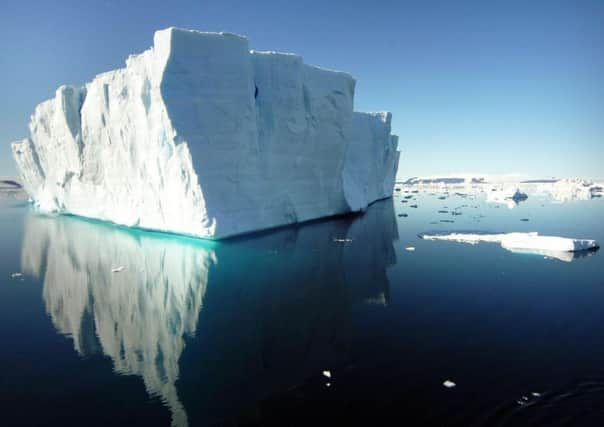Antarctic lakes network that could raise sea levels by 58m are discovered by scientists


An international study which involved geographers from Sheffield University found that huge lakes have been forming on the surface of Antarctica since at least the 1940s, and extensive networks of streams have been draining water on to ice shelves that are prone to collapse.
The research concludes that damage from “meltwater” - the drainage of surface water - is more extensive than previously thought and could accelerate ice loss as the climate warms.
Advertisement
Hide AdAdvertisement
Hide AdScientists had believed that the drainage of meltwater was a rarity in Antarctica.
But the research team used aerial photography and satellite imagery to find that it moves vast distances across the surface of the ice sheets on to shelves.
Ice shelves, floating parts of ice sheets, are vulnerable to collapse when water flows into their cracks and crevasses.
The research team believes that in a warming climate, more water is likely to be produced on the surface of Antarctica, which could accelerate the ice sheets’ contribution to sea level rise.
Advertisement
Hide AdAdvertisement
Hide AdCurrent predictions of sea-level rise do not include these processes.
Dr Jeremy Ely, from Sheffield University’s geography department, said: “If melted completely, Antarctica’s ice sheets contain enough water to raise global sea levels by around 58 metres.
“So it’s important that we understand how and where meltwater forms, moves, drains and the impact it can have on ice shelves, which can be prone to collapse.”
He added: “Our study has found that extensive networks of lakes and streams have persisted in Antarctica for decades which move surface water across its ice sheets on”to ice shelves.”
Advertisement
Hide AdAdvertisement
Hide AdDr Ely said the study shed new light on scientists’ understanding of the region’s infrastructure.
He said: “Despite extensive studies in Greenland and observations of individual meltwater drainage systems in Antarctica, we previously had little understanding of how water moves across the surface of Antarctica’s ice sheets.”
The study is published in the scientific journal, Nature.